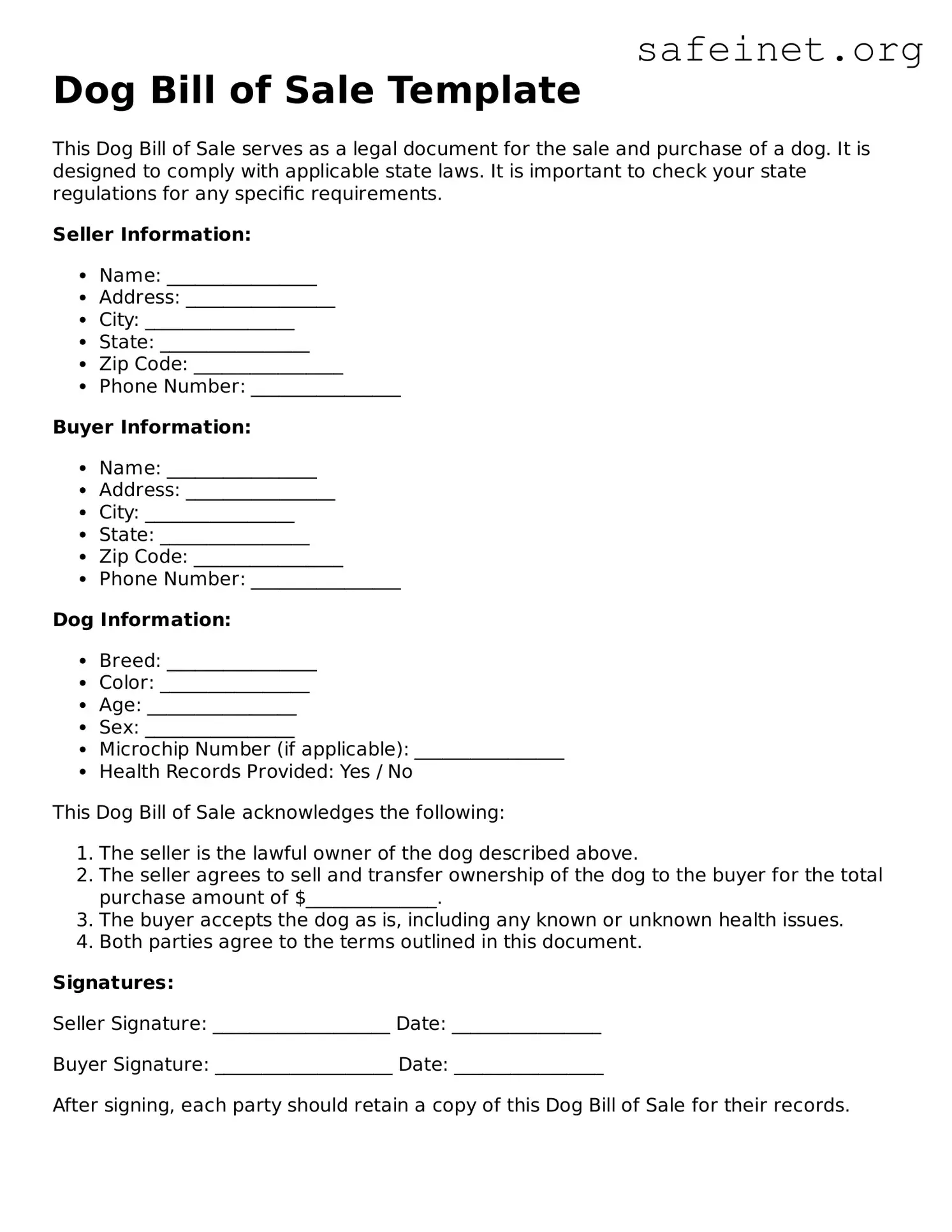What is a Dog Bill of Sale?
A Dog Bill of Sale is a legal document that establishes the transfer of ownership of a dog from the seller to the buyer. This form provides important details about the transaction, including the identities of both parties, a description of the dog, and any conditions of the sale. It serves as proof that the buyer has purchased the dog and as a receipt for the seller.
Why should I use a Dog Bill of Sale?
Using a Dog Bill of Sale helps protect both the buyer and the seller. For the buyer, it ensures that they have legal documentation proving ownership, which can be important for future registration with local authorities or veterinary services. For the seller, it provides a record of the sale, reducing liability in case questions arise about the dog’s health or behavior after the transfer.
What information should I include in the Dog Bill of Sale?
The Dog Bill of Sale should include several key details: the names and addresses of both parties, the date of the sale, a clear description of the dog (including breed, age, color, and any identification numbers like microchip details), and the sale price. It is also beneficial to include any warranties or guarantees regarding the dog's health, as well as the circumstances under which the sale occurs.
Do I need a witness or notary for the Dog Bill of Sale?
While not always required, having a witness sign the Dog Bill of Sale or notarizing the document can add an extra layer of protection. This can help to verify that the transaction took place and may be beneficial if the transaction is questioned later. Some states or localities may have specific requirements, so checking with local regulations can be a good idea.
Is the Dog Bill of Sale legally binding?
Yes, once signed by both parties, the Dog Bill of Sale is considered a legal contract. This means that both the seller and the buyer are obligated to abide by the terms outlined in the document. If either party fails to meet their obligations as set forth in the bill of sale, the other party may have legal recourse to seek resolution.
Can I download a Dog Bill of Sale template online?
Absolutely! Many websites offer free or paid Dog Bill of Sale templates that can be downloaded and customized. When using a template, ensure that it complies with your state’s laws and includes all necessary information. Taking the time to tailor the template to your specific situation is important for ensuring that it meets legal requirements.
